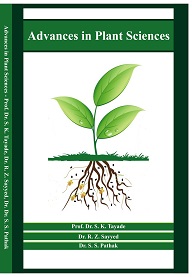
Prof. Dr. Santosh Tayade
Prof. Dr. Santosh Tayade is Professor and Head, Department of Botany
at PSGVP Mandal's Science College, SHAHADA, (MS) India. He has 23
years of teaching and research experience. He authored and co-authored
33 papers in International and National research journals and one text book
publications. He is life member of various societies and organizations in
India. He has trained students for Ph. D. research work. He is a member of
Board of Studies and faculty of science of North Maharashtra University,
Jalgaon
Read more...


